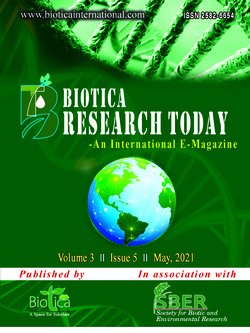
Tree Mulberry: The Future of Tropical Sericulture Farming
P. Sudhakar*
Regional Sericultural Research Station, Central Silk Board (CSB), Ananthapur, Andhra Pradesh (515 001), India
K. P. Kiran Kumar
Regional Sericultural Research Station, Central Silk Board (CSB), Ananthapur, Andhra Pradesh (515 001), India
B. Vijaya Naidu
Regional Sericultural Research Station, Central Silk Board (CSB), Ananthapur, Andhra Pradesh (515 001), India
Babulal
Central Sericultural Research and Training Institute (CSRTI), CSB, Mysore, Karnataka (570 008), India
DOI: NIL
Keywords: Leaf production, Mulberry, Raw silk, Silkworm rearing
Abstract
Mulberry is cultivated under varied agro climatic conditions for silkworm rearing and cocoon production in India. In Southern zones of India Andhra Pradesh, Karnataka, Tamil Nadu states were considered most traditional belts for Bivoltine sericulture. It was estimated that ¾th of the countries raw silk will be generated in these 3 states only. Though since decades the mulberry raised as low bush plantation accommodating 5000 to 6000 plants/acre in the geometry of 3′×3′ and paired row spacing with [(2′×3′)×5′] in irrigated conditions. But since 2-3 decades a lot of changes in the environment are noticed. Irregular monsoons, unprecedented down pouring, curtailed annual rainfalls compelling the farming community to go for planting of reduced quantity of plants in wider spacing maintained with improved irrigation methods (AMITs) with sustained quality and quantity of mulberry leaf. To study the impact of drought stricken atmospheric conditions among the sericulture farming community the present study was aimed.
Downloads
not found
Reference
Dandin, S.B., Jayaswal, J., Giridhar, K., 2003. Handbook of Sericulture Technologies (Recommended for South Indian States), p. 259. Published by Central Silk Board, CSB Complex, BTM Layout, Madivala, Bangalore, Karnataka.
Fotadar, R.K., Anil Dhar., Shiva Dhar., Mukherjee, P., 1995. Effect of different pruning heights on the mulberry yield and silkworm rearing. Indian J. Seric. 34(2), 105-109.
Sudhakar, P., Hanumantharayappa, S.K., Sudhakar Rao, P., Jalaja S Kumar, Sivaprasad, V., 2018. Tree mulberry- Sustainable and economically viable Sericultural farming for southern tropical zones. Int. J. Appld. and Pure Sci. and Agric. 4(6), 13-23.
